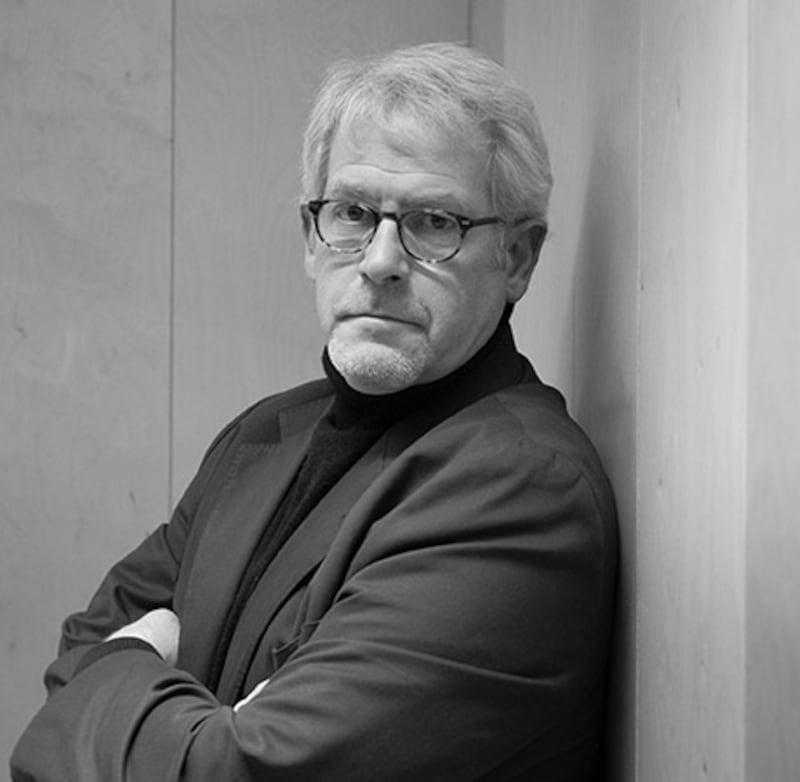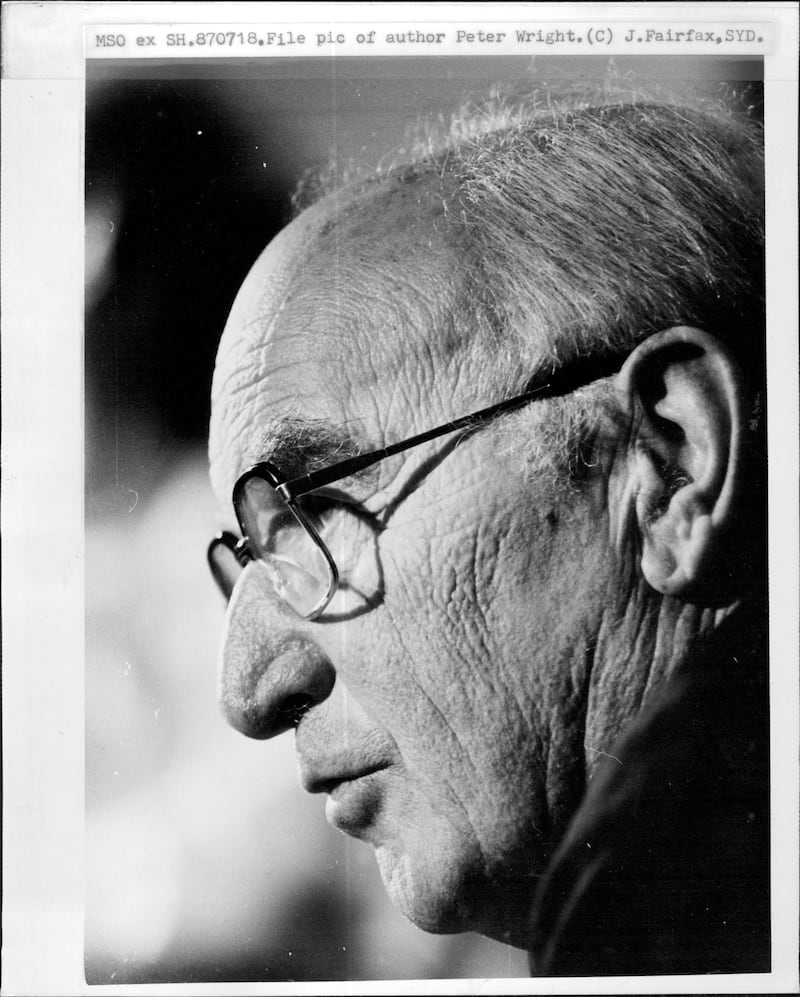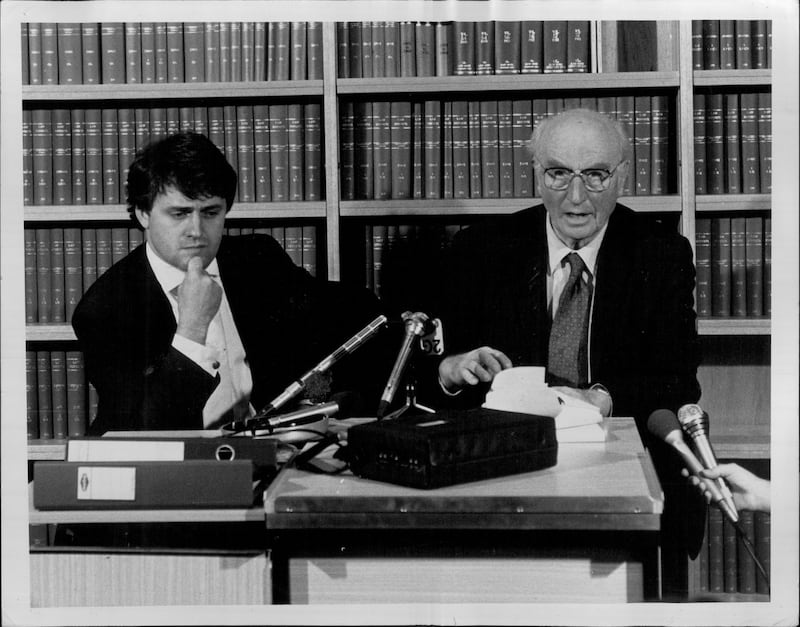Nearly four decades on, the zeal displayed by Conservative prime minister Margaret Thatcher in her decision to challenge the publication of former MI5 officer Peter Wright’s Spycatcher memoir in every court possible remains unfathomable.
Warned repeatedly that she would lose, humiliatingly so, her determination to continue is partly explained, perhaps, by “Old Stripey”, one of the red ministerial boxes that Thatcher took with her each night to her small flat under No 10 Downing Street’s eaves.
This box marked with “a large blue stripe” across its lid contained the daily top secret briefings from the intelligence services, MI5 and MI6, and was always bigger than the other ministerial boxes taken upstairs each night.
Thatcher had a weakness for spies, former Conservative minister Jonathan Aitken, who for a time dated Thatcher’s daughter Carol, tells Tim Tate, the author of To Catch A Spy – How The Spycatcher Affair Brought MI5 in from the Cold. “[She] had all sorts of blind spots.”
Within months of taking office, Thatcher, still insecure in her leadership, had understood that intelligence briefings came to her, and to her alone, and that they brought “power and control”, Tate tells The Irish Times.

“Her favourite bedtime reading was espionage novels,” recalls Aitken, while demands for bringing the intelligence agencies properly under the control of parliament cut across Thatcher’s “really proprietorial attitude about her intelligence services”.
From the beginning, spies and former spies featured significantly in her in-tray, starting off with Queen Elizabeth’s art expert, Anthony Blunt, whose spying for Russia had been a poorly kept secret for decades among the intelligence services.
Andrew Boyle’s book, Climate of Treason, published in the summer of 1979, had revealed that Kim Philby, Guy Burgess, Donald Maclean – the so-called “Ring of Three” – had not acted alone, and that there were five in the ring, if not more.

Boyle had not named Blunt, but Private Eye did, leading cabinet secretary Robert Armstrong, who had formed strong intelligence ties in his Whitehall rise, to warn Thatcher: “This is a minefield, and if you are not thoroughly familiar with it, it is both easy and dangerous inadvertently to put a foot wrong.”
Rising in the House of Commons on November 21st that year, Thatcher told MPs accurately that Blunt had been a Soviet agent since his recruitment in Cambridge in the 1930s, though she quickly departed from the truth, thereafter.
Drawing a distinction, she said that Blunt, who was recruited by MI5 in 1940, had hurt British interests, but not “British military operations or British lives” – even though MI5 knew that that was not true, including the loss of a Moscow agent, who was executed.
Equally, she indulged in half-truths when speaking about the 1963 offer to testify against Blunt by an American who had been recruited by the Russians – a development that led to the well-connected Blunt not only not being prosecuted, but being granted immunity.
A year later she conspired with her top civil servant to ensure that a “friendly, right-wing” journalist, Chapman Pincher, was briefed in a bid to defuse allegations that former director of MI5, Roger Hollis, had been a Russian spy.
Despite everything that she claimed later – that intelligence people could not be allowed to speak publicly – Thatcher signed off on releasing top-secret intelligence material to Pincher for his 1981 book, Their Trade is Treachery.
In return for the leaks, “the malleable and dependable” Pincher could be depended upon to tell the story that No 10 wanted told – that Hollis had been “completely cleared”. However, while Hollis may not have been guilty, he was never cleared.
By then living poorly off, poorly housed in Tasmania, an embittered Peter Wright, who had been denied his just pension retirements when he left MI5 in 1975, read Thatcher’s words to the House of Commons, and was infuriated.
Even if Blunt had not been a spy, Peter Wright would have hated him.
The art historian Blunt was an effete, socially well-connected gay man who had frequented public toilets in search of rough sex in years when the practice of homosexuality was a criminal offence and could draw a sentence of two years in prison with hard labour.
But he was a also spy, and the socially excluded Wright, who believed Blunt and his ilk in MI5 – to borrow the cricketing parlance – saw themselves as “gentlemen” and people of Wright’s less-favoured backgrounds as “players”, hated him even more because of it.
His feelings had deep roots. Wright should have gone to Cambridge University and had qualified in the necessary school examinations, but his father’s descent into alcoholism after he was fired in the early 1930s destroyed that ambition.
Deeply right wing in his views, even in his own repeated admissions, Wright had spent most of his later career in MI5 as “a spycatcher”, though one frequently frustrated by MI5’s failures to properly investigate its own, believing that Blunt was one of those who had been determined to block such investigations.
Top of his list was Roger Hollis, but there were others, too. Leaving the agency, the embittered Wright had brought with him the names of 35 people who were “formally listed” in MI5 files as Russian spies, but never prosecuted.
There were 20 “additional establishment figures” who Wright believed should have been on that list, but were not, because that very same establishment did not want to turn over too many rocks in its own garden.
Much of the Spycatcher story is now well known, including Thatcher’s fanatical steps to stop its publication and the humiliation of Armstrong in an Australian court where he was forced to admit he had “been economical with the truth”.
Speaking to The Irish Times, Tate believes Armstrong should have been convicted of perjury, while both he and Thatcher should have faced charges of conspiring to pervert the course of justice.
“Armstrong told lies, he did. It wasn’t just that he was economical with the truth. He told direct lies under oath, and he did so to protect this shabby little plot that he and Thatcher had cooked up in 1980 to defuse the Hollis scandal.”
Unlike others, Tate believes “a good proportion” of Wright’s allegations had “solid prima facie evidence” behind them, even if the former MI5 agent was eccentric: “But, it wasn’t his own mad little quest. He dug out, found and provided evidence.”

He does, however, draw the line at Wright’s campaign against Labour prime minister Harold Wilson, who he believed was a Russian spy. The campaign did untold damage to Wilson’s reputation, fuelling his fears that the intelligence agencies were out to destroy him.
“Wright did have an obsessive belief that the British establishment was rotten to the core. He was unashamedly, virulently right wing. He believed that union leaders on very little evidence were Soviet agents of influence. And he firmly believed that Wilson was a spy.
“He behaved appallingly in some circumstances. The Wilson plot is just unforgivable,” he adds, accepting that Wright’s belief about Wilson raises credibility questions about everything else he professed.
Tate, who has made documentary films for BBC, ITV and Channel 4 dating back to the 1980s, has spent years seeking to have all of the Spycatcher files lodged with the National Archives in Kew.
He had been “astonished” to find they had not been released when he first went looking for them in 2019, before being “obstructed, obfuscated, delayed and flat-out lied to” by the Cabinet Office in the years afterwards.
Eventually, a tranche was released in 2023, but there are 32 more Cabinet Office binders that have still not been released, even though Thatcher’s biographer, Charles Moore, and an academic were given sight of them.
Tate remains angry about the secrecy, but he will return to battle with the Cabinet Office, especially now that it is reporting to a new political master in the shape of Labour’s Keir Starmer.
So, too, will the man who was Peter Wright’s lawyer, Malcolm Turnbull, later Australia’s prime minister. Forty years ago, he was shocked by No 10’s viciousness, including a warning from a senior official that the by then ill Wright should get medical attention before heading into court.
The files still held must be released, Turnbull, now in his 70s, believes: “He knows some of the people now in power, so he has said, ‘Let’s do this together!’ We can report more for the paperback edition,” says Tate, with a laugh.
- Sign up for push alerts and have the best news, analysis and comment delivered directly to your phone
- Find The Irish Times on WhatsApp and stay up to date
- Our In The News podcast is now published daily – Find the latest episode here






















